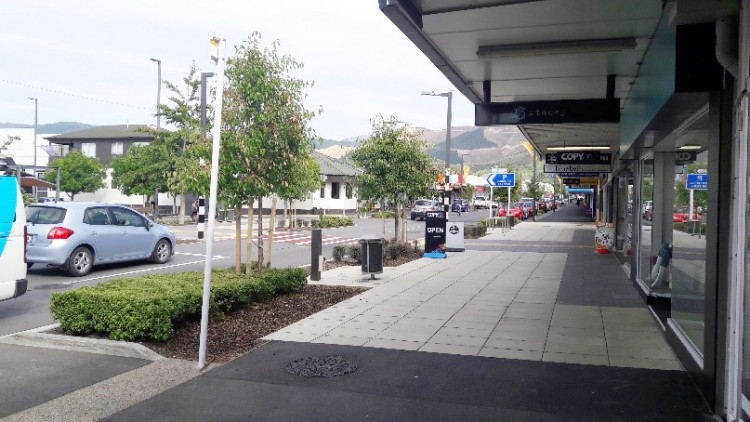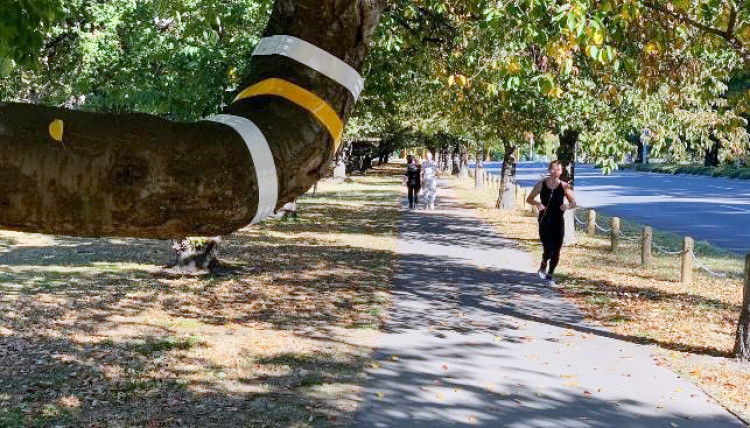To prevent head injuries to pedestrians, footpaths shall have a vertical (overhead) clearance over their entire width (including the street furniture and frontage zones that is free of all obstructions, such as vegetation, signs, open windows and shop awnings. The table below shows the minimum overhead clearances. The ideal clearance includes 0.5m of obstruction free space above the absolute minimum, providing for taller people and those using umbrellas (where rain cover is not consistent).
Table: Overhead clearance
| Scenario | Clearance |
|---|---|
| Ideal clearance | 2.5m[1] |
| Absolute minimum* | 2.0m# |
* Only acceptable in constrained existing environments.
# The clearance shall never be less than this, even for a short distance.[2]

Building veranda overhang and the clearance to the footpath, Richmond. (Photo: Jeanette Ward)
A protrusion is an object projecting into the footpath from the side. NZS4121 states that for an accessway to be usable by people with disabilities, it shall be free from hazards or obstructions. Permanent obstructions should be designed around to guide users away from obstructions and movable obstructions shall be placed and controlled so as to leave a clear route. Very minor protrusions are acceptable, if they are not within the pedestrian through route and comply with the dimensions in table below.[3] An example of this is shown in the photo below, where protected trees are beginning to encroach on the pathway and as an interim measure these branches are highlighted with reflective coloured bands.

Highlighting a tree branch that is a protrusion in Hagley Park. (Photo: John Lieswyn)
Every item protruding into the footpath shall have an element (which can include any mounting post) within 150mm of the ground, so that the vision impaired who use canes can detect it[4], and any protrusion that is not detectable by a cane should have warning tactile indicators installed. A protrusion shall not reduce the through route width to less than 1.2m. The table below outlines acceptable protrusions.
Table: Acceptable protrusions
| Mounting | Maximum protrusion into frontage or street furniture zones | Height | Protrusion examples |
|---|---|---|---|
| Attached to walls | 100mm | Above 0.7m and below 2m |
Windowsills Business signs Parking meters Public art Benches Post boxes Vegetation Traffic signs Drinking fountains Litter bins Sandwich (advertising) boards |
| Freestanding or mounted on poles | 300mm |
[1] Figure 5.9 in Austroads. (2017). Guide to Road Design Part 6A: Paths for Walking and Cycling
[2] Section 13.2.2 Accessible outdoor public areas in Standards New Zealand (2001) NZS 4121:2001 Design for Access and Mobility – Buildings and Associated Facilities.
[3] Axelson, P.W. et al. (1999). Designing sidewalks and trails for access. US Department of Transportation(external link)
[4] Standards New Zealand. (2001). NZS 4121:2001 Design for Access & Mobility.